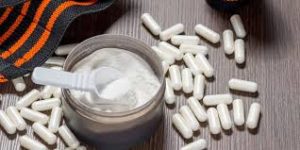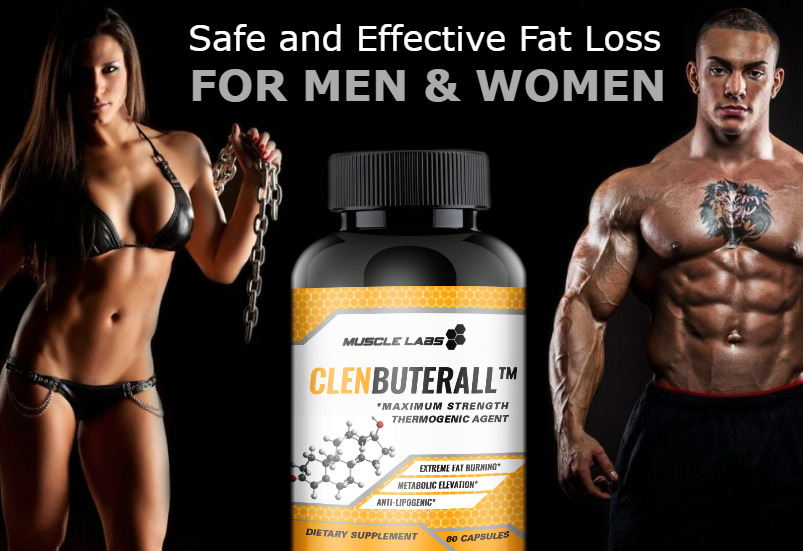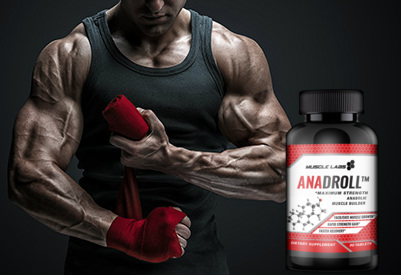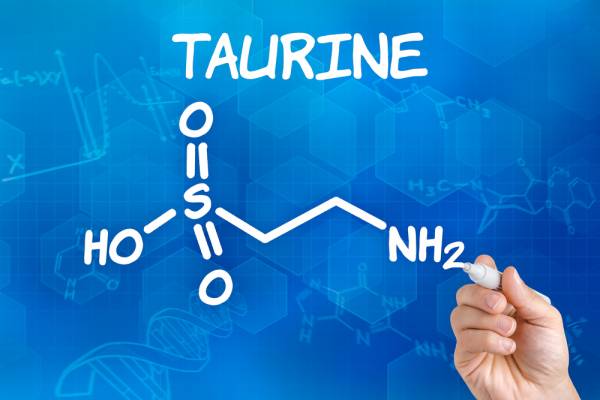How To Take Creatine
When you’re supplementing your diet with creatine, make sure you’re getting the most benefit. Available in both powder and pill form. Choosing one over the other comes down to which one you find more convenient. Consult your doctor before adding this supplement to your daily routine.
Athletic Performance
A chemical already found in your body that helps your muscles make energy. Considered a safe supplement. Taken by athletes to help improve performance.
While there is some evidence that supplement may benefit athletes. Most of the studies on the supplement have been small and that more research is necessary to find out how effective it is.
Capsules vs. Powder
 Choosing tablets vs. powder may depend on your dose. One tablespoon of powder is equal to 5 grams. The amount of creatine in a capsule depends on the manufacturer. Ranging from 0.7 to 2.5 grams per capsule.
Choosing tablets vs. powder may depend on your dose. One tablespoon of powder is equal to 5 grams. The amount of creatine in a capsule depends on the manufacturer. Ranging from 0.7 to 2.5 grams per capsule.
Convenience may also factor into your decision. You might prefer the ease of swallowing a premeasured pill. As opposed to the mess and inconvenience of having to measure and mix the powdered creatine.
As far as digestion goes, the gel capsule, which is a protein, should break open once it hits the acidic contents of your stomach and the contents contained should undergo the same digestive process as the powder.
How to Take
To maximize creatine levels in your muscles, it’s recommended that you take the supplement with a simple carbohydrate. The powder can be mixed in a cup of juice or blended in a fruit smoothie. If you take capsules, instead of water take it with a cup of juice.
If your goal is to build muscle, the International Journal of Sports Nutrition and Exercise Metabolism found that taking with whey protein helped improve lean body mass better than a placebo. Add the protein powder to your fruit smoothie or creatine and juice mix.
Safety Tips
Although considered safe, don’t take a higher dose than recommended. High doses may affect your kidney, liver or heart health. Also, increases muscle fluid retention, so be sure to drink plenty of water when supplementing to prevent dehydration.
You should not take if you’re pregnant, nursing or have kidney disease or diabetes. Always talk to your doctor before adding any supplement to your diet.
Can Women Take to Lose Weight?
Creatine doesn’t contain any special powers that’ll help you slim down to a supermodel size. Instead of relying on supplements, focus your weight loss efforts on eating less and moving more. If you’ve added strength-training to your weight-loss plan, will help you add muscle, which can give your metabolism an extra boost. Before embarking on your weight-loss journey or starting a creatine supplement, talk to your doctor about what might work best for you.
What Is Creatine?
An amino acid naturally produced in your body. It’s stored in your muscles and used as a source of energy for intense exercises done over short periods of time, such as lifting weights. Also found in animal protein, which means the chicken you had at lunch contributes to the amount stored in your muscle.
What’s important to note when you’re thinking about adding a creatine supplement is that your muscle is only able to store a certain of the amino acid. . So if your creatine stores are full, taking more won’t do you much good.
Weight Loss
Creatine supplements may help improve muscle growth in both younger and older women who lift weights, which may indirectly assist in your weight loss. Muscle helps your body burn more calories, which is one of the reasons why your boyfriend gets to eat more than you, because men tend to have more muscle mass than women.
When you’re on a weight-loss diet, you lose muscle, which means your calories needs fall, and you’ll need to eat even less to continue to drop those pounds. Adding a little muscle to your frame may help limit the dip in your calorie-burning, which can benefit your weight-loss efforts.
You don’t have to limit your muscle-building activities to weight lifting though. Yoga, gardening, shoveling snow and body resistance exercises such as push-ups and lunges also build muscle.
Considerations for Women
While the supplement may help you add calorie-burning muscle, some women may notice the number on the scale go up after taking creatine. That’s because supplementation causes your muscles to retain water, which may add extra weight.
Because the creatine draws water from other parts of your body, it’s recommended that you drink more water to help prevent dehydration. Combining with caffeine may increase your risk of dehydration, according to the University of Maryland Medical Center, so in addition to drinking enough water, don’t exercise in the heat while taking the supplement.
Because not enough is known about the effects of creatine on babies, you should not take creatine supplements if you’re pregnant or nursing. Do not take with NSAIDs, diuretics and certain other medications, and people with liver or kidney disease or high blood pressure should avoid it, warns UMMC.
Change Your Diet to Lose Weight
 Building muscle is a good way to increase your calorie burning to lose weight, but you need to make changes to your diet, too. Although calorie needs vary depending on age and activity, most women can lose weight on 1,200 to 1,800 calories a day. Fill your diet with nutrient-rich, low-cal foods so you don’t feel hungry.
Building muscle is a good way to increase your calorie burning to lose weight, but you need to make changes to your diet, too. Although calorie needs vary depending on age and activity, most women can lose weight on 1,200 to 1,800 calories a day. Fill your diet with nutrient-rich, low-cal foods so you don’t feel hungry.
That means more fruits, vegetables, whole grains, lean sources of protein such as fish, poultry and beans and low-fat or nonfat milk. Keep calories in check by making half your plate fruits and veggies, one-quarter lean protein and one-quarter healthy whole grains. Don’t skip the fat, but keep it healthy with olive oil, nuts and seeds.
Does Creatine Help You Get Ripped Abs?
Wouldn’t it be nice if you could take an over-the-counter supplement to get a sculpted physique? While many products claim you can take creatine for ripped abs or a sculpted physique, the main reason people take oral creatine is to increase exercise performance and strength.
Tip
Creatine is an amino acid that may help you build lean muscle mass, but in order to get ripped abs, you also need to reduce body fat, follow a strict diet and do plenty of compound movements and core exercises.
Ripped Abs
While creatine alone may not result in ripped abs, if you plan on taking it for sports and fitness-related purposes, there are certain protocols to follow. In general, there are two supplementation protocols for maximum creatine absorption. One calls for a loading phase followed by a reduced daily dosage, while the other calls for several small doses ingested over the course of a day, followed by a maintenance period.
The first protocol recommends a loading phase with 20 to 25 grams of creatine. This larger dose is then split into 5-gram doses ingested daily over four or five days. The second protocol recommends taking a 1 gram dose every 30 minutes until you reach 20 grams. This method may provide a better creatine absorption. A maintenance phase of 3 to 5 grams of creatine should follow both protocols.
How to Use Most Effectively to See Lasting Results
While creatine may help you develop a more muscular physique, a proper diet to reduce body fat and consistent resistance training and cardio exercise are necessary to reach your goal of getting ripped abs. When hitting the gym, make sure to include compound exercises that train multiple muscle groups at the same time, core training and cardiovascular exercise.
Additionally, for healthy weight loss, the Academy of Nutrition and Dietetics recommends eating nutrient-rich foods from a variety of food groups including fruits, vegetables, lean protein and whole grains.
Creatine is a naturally-occurring amino acid produced by the liver, kidneys and pancreas. It is also found in various foods. During high-intensity exercise, the body uses a derivative of creatine for energy. Athletes and body builders consume creatine supplements to increase lean muscle mass and improve athletic performance. However, there is some controversy as to how effective creatine supplements are in improving athletic performance.
Can Creatine Be Taken in Milk?
Creatine is a natural supplement used by athletes and bodybuilders to improve performance and enhance muscle growth. It may also help boost your cognitive function and temporarily improve your workout speed and energy. Fitness enthusiasts often supplement creatine with whey protein, which is a dairy product. There’s no known reason why you cannot mix creatine in milk. Though mixing with milk doesn’t seem to have benefits over other mixing liquids.
Function and Milk
Creatine is a chemical naturally found in muscles, where it provides energy. Small studies suggest that supplementing creatine may improve muscle building and recovery in young adults. However, not effective in older adults. Combining creatine with simple carbohydrates helps increase its absorbability in the muscles.
Because lactose, a natural sugar found in milk, is a simple carb, it may help improve your body’s ability to absorb creatine. There are no known issues with taking creatine along with milk as long as you are not lactose-intolerant. That condition may cause gastrointestinal issues, such as stomach pain and rumbling, if you take the supplement with milk.
Does Creatine Cause Anxiety?
Creatine, a naturally occurring amino acid found in the body, is also one of the most popular supplements among competitive athletes and bodybuilders. Aside from creatine being consumed to improve athletic performance, it has also been used to treat cardiovascular disease, Parkinson’s disease and muscular dystrophy.
Precautions should be taken before ingesting creatine, because it may cause side effects including gastrointestinal problems, anxiety and kidney damage. Consult your doctor before use.
What Is Creatine?
Creatine is most known for its ability to help your muscles produce energy during heavy exercise, which makes sense since it is an amino acid located mostly in your muscles. You can also get creatine if you regularly eat red meat or seafood. According to the Mayo Clinic, your body converts creatine to phosphocreatine, then stores it in your muscles for energy. This increase in energy is one of the main reasons people take oral creatine.
In fact, a July 2012 study review of creatine published in the Journal of International Society of Sports Nutrition found that supplementation with creatine has regularly shown to increase strength, fat-free mass and muscle morphology with concurrent heavy resistance training more than resistance training alone.
For the most part, creatine is safe to take as long as you adhere to appropriate doses. However, since the U.S. Food and Drug Administration does not regulate nutrition supplements, there is no seal of approval guaranteeing its safety. There is also evidence suggesting that creatine may be unsafe when taken in large doses.
If you experience muscle cramping, nausea, diarrhea, dizziness, dehydration, or any other abnormal symptoms, discontinue use and talk with your doctor. Additionally, the Cleveland Clinic points out that combining oral creatine with other supplements may result in complications in the liver and kidneys.
Creatine in the Body
Made from amino acids, the components of protein. Converted into creatine phosphate in the liver and is stored in red muscle tissue. During weight lifting, sprinting or an other intense activity of short duration, creatine phosphate is converted into adenosine triphosphate. Also known as ATP, the body’s major energy source.
Dosing
Creatine supplements are not recommended for children younger than 19. Adults desiring to improve athletic performance should limit consumption to 5g four times daily, or 20g each day. Adults wishing to maintain muscle mass and athletic performance should limit consumption to 2-5g each day.
There has been limited evidence that creatine is helpful in reducing cholesterol; 20-25g each day for five days followed by 5-10 g each day thereafter is appropriate. Speak with your doctor before using creatine to treat high cholesterol.
Is Creatine Effective?
Increases your body’s level of ATP, thus giving you more energy to engage in physical activity. According to Vanderbilt University, efficacy depends on your diet, regular level of exercise and frequency of exercise. Creatine supplements are most effective when natural creatine level is low. Consume creatine with a carbohydrate, such as fruit juice or a starchy food, to increase efficacy.
Available Forms and Dietary Sources
Available in powder, capsule and liquid form. Although our bodies produce about half the creatine our body needs to perform athletic activities. The other half comes from dietary sources. Fish, especially salmon and herring, red meat and wild game, such as deer and elk, are the best sources of creatine.
Common Uses
Most commonly used as an athletic performance enhancer. It appears to increase strength. Improving lean body mass during high-intensity, short-duration workouts such as weightlifting or sprinting. Also be effective in treating heart disease.
According to the University of Maryland Medical Center, improves low levels of energy, can help lower triglycerides and can lower levels of homocysteine, which is a precursor to having a heart attack or stroke. In addition, used to treat depression, bipolar disorder and Parkinson’s disease. Also, Lou Gehrig’s disease, arthritis, an eye disease known as gyrate atrophy, McArdle’s disease and muscular dystrophy.
Side Effects
In addition to anxiety, many side effects associated with using creatine. Therefore, consult a doctor before use. Side effects include stomach discomfort, diarrhea, nausea and vomiting, muscle cramps, heat intolerance, dehydration, fever, electrolyte imbalance, mild headaches, irritability, nervousness, sleepiness, depression, dizziness and aggression. Serious side effects may include seizures, blood clots in the legs, swollen limbs, altered liver function and kidney damage such as interstitial nephritis.
Precautions
May cause adverse effects when used in conjunction with prescription medications, over-the-counter drugs and herbs or supplements. Avoid using if you are taking nonsteroidal anti-inflammatory drugs such as diclofenac, naproxen, diflunisal, etodolac, ibuprofen and ketoprofen. Do not use with diuretics, because they may increase the risk of dehydration and kidney damage. Do not mix with stimulants such as caffeine, because the risk of dehydration and stroke increases.








